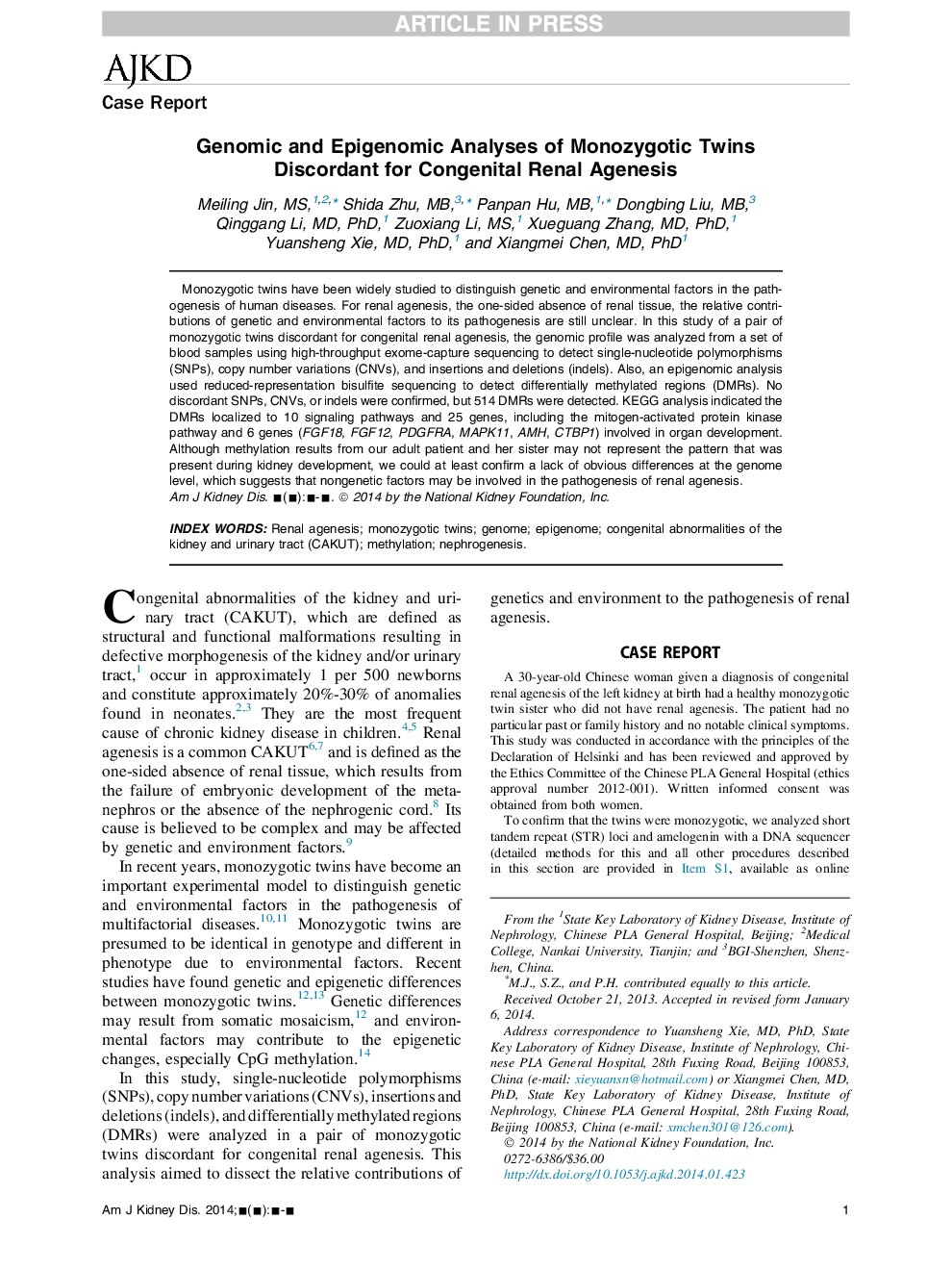| Article ID | Journal | Published Year | Pages | File Type |
|---|---|---|---|---|
| 6157464 | American Journal of Kidney Diseases | 2014 | 4 Pages |
Abstract
Monozygotic twins have been widely studied to distinguish genetic and environmental factors in the pathogenesis of human diseases. For renal agenesis, the one-sided absence of renal tissue, the relative contributions of genetic and environmental factors to its pathogenesis are still unclear. In this study of a pair of monozygotic twins discordant for congenital renal agenesis, the genomic profile was analyzed from a set of blood samples using high-throughput exome-capture sequencing to detect single-nucleotide polymorphisms (SNPs), copy number variations (CNVs), and insertions and deletions (indels). Also, an epigenomic analysis used reduced-representation bisulfite sequencing to detect differentially methylated regions (DMRs). No discordant SNPs, CNVs, or indels were confirmed, but 514 DMRs were detected. KEGG analysis indicated the DMRs localized to 10 signaling pathways and 25 genes, including the mitogen-activated protein kinase pathway and 6 genes (FGF18, FGF12, PDGFRA, MAPK11, AMH, CTBP1) involved in organ development. Although methylation results from our adult patient and her sister may not represent the pattern that was present during kidney development, we could at least confirm a lack of obvious differences at the genome level, which suggests that nongenetic factors may be involved in the pathogenesis of renal agenesis.
Related Topics
Health Sciences
Medicine and Dentistry
Nephrology
Authors
Meiling MS, Shida MB, Panpan MB, Dongbing MB, Qinggang MD, PhD, Zuoxiang MS, Xueguang MD, PhD, Yuansheng MD, PhD, Xiangmei MD, PhD,
